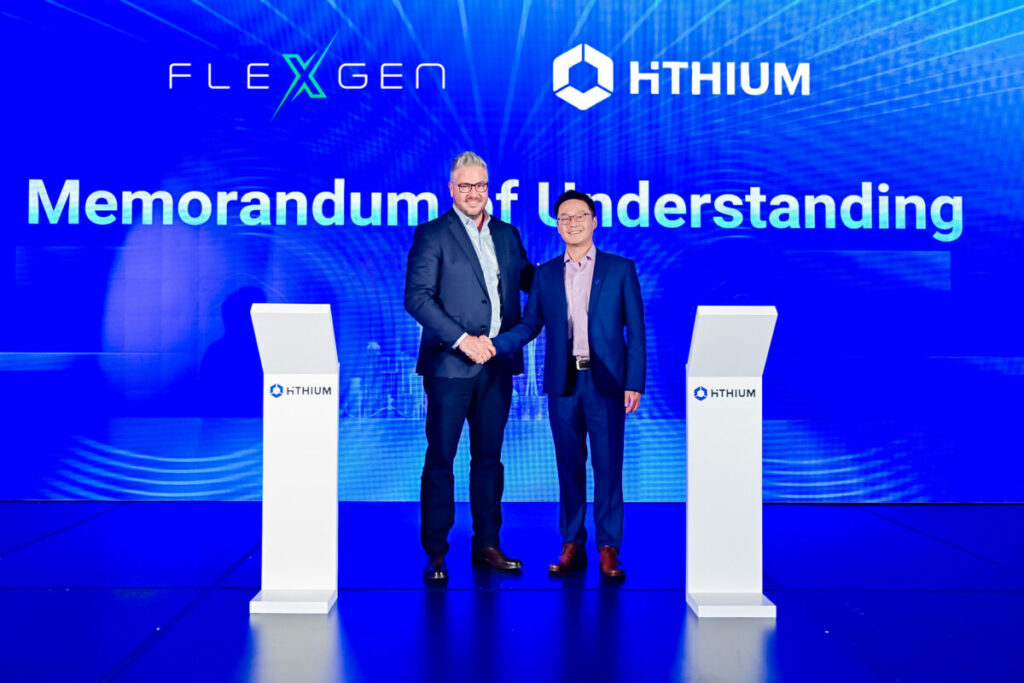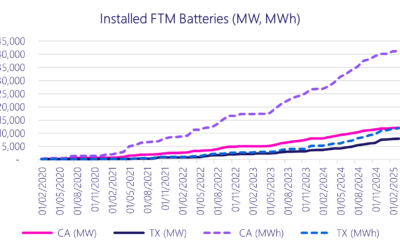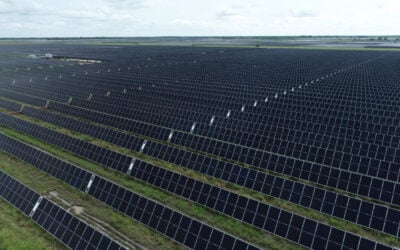
It is a “certainty” that all grid-connected energy storage systems will require upgrades to their software, although the reasons for upgrades will be varied, Energy-Storage.news has heard.
Yann Brandt, chief commercial officer (CCO) at software-centric battery storage system integrator FlexGen told the site that in his view, “every single project around the world is going to need upgrades at some point”.
Enjoy 12 months of exclusive analysis
- Regular insight and analysis of the industry’s biggest developments
- In-depth interviews with the industry’s leading figures
- Annual digital subscription to the PV Tech Power journal
- Discounts on Solar Media’s portfolio of events, in-person and virtual
Brandt gave an interview following a FlexGen announcement a couple of months ago that the system integrator had carried out a number of upgrades to customer battery energy storage system (BESS) assets in the ERCOT, Texas, market.
In addition to providing commissioning, engineering and procurement services for utility-scale BESS, FlexGen also onboards projects with its energy management system (EMS) and digital controls platform, Hybrid OS.
Over in ERCOT, FlexGen carried out upgrades to Hybrid OS in order for its customers’ sites to meet changing power market regulations as well as new utility standards. The company claimed that through field experience and application of R&D work at its new laboratory and compliance centre facilities, it has managed to reduce the time required for such upgrades by about 75%.
That matters, Brandt told Energy-Storage.news, because whether asset owners and investors are aware of it or not, their BESS project too will be in line for the upgrade treatment, sooner or later.
“The reality is: energy storage projects are going to be upgraded many times over their lives, no matter which ISO you’re in, because regulators are going to change the way that batteries have to operate in the grid, power markets are going to change, revenue opportunities are going to adapt, and some projects are going to enter into different financial relationships, whether it’s corporate PPAs, or some other hedges or tolls,” Yann Brandt said.

In this particular case, it was that grid and wholesale electricity market operator ERCOT implemented some new ancillary services products, Fast-Frequency Response (FFA) Advancement and ERCOT Contingency Reserve Service (ECRS).
In order to keep up with revenue opportunities, BESS assets need to remain in compliance with the codes and parameters governing those opportunities. That necessitates upgrades, and in some of the more fast-acting markets, those will be more frequent.
“It’s just a fundamental necessity that you need to update your systems,” the FlexGen CCO said.
Webinar shows case study of BESS market adaptation
As alluded to above however, there will be lots of different reasons for upgrading. Last week, Energy-Storage.news hosted a webinar with Fluence – one of FlexGen’s rival system integrators – on the need for BESS asset operators to respond to changing energy market rules.
However, the webinar didn’t come at the issue from a system integrator perspective. Instead, it examined how Fluence’s Mosaic automated bidding platform was used to adapt the market participation of a 720MWh BESS in California’s CAISO market to changes in market rules.
In the webinar, which you can watch on-demand on the site here (registration required), Fluence product manager Drew Skau explained how the BESS’ owner, utility PG&E, was able to optimise the battery’s performance and revenue potential in the face of those changes.
Creating new value and upside to existing projects with upgrades
One interesting difference between CAISO and ERCOT is that CAISO expects to manage state of charge in batteries connected to its grid, while ERCOT does not, although state of charge monitoring has been proposed in ERCOT recently, to a fairly controversial reception.
FlexGen’s EMS is capable of providing good state of charge data, Yann Brandt said, due to in-built data analytics capabilities. That’s an advantage not just in markets like CAISO where that’s a necessity of market participation, but being able to use state of charge analysis and other data coming out of the system has a multitude of other purposes.
“Having an analytic system embedded into an EMS allows you to be able to make real-time decisions based on what you’re seeing from the asset, versus what should have happened with the asset against the theoretical, digital mirror image of that site,” Brandt said.
The energy storage market is still at its early stages, but is already “roaring”, because the fundamental need for energy storage is converging with the market reality that money can be made from it, the FlexGen CCO said.
In all of that excitement, asset owners perhaps don’t think too much about what happens a little way into the lifetime of a project, and perhaps aren’t aware that there may come a time when they want to, say, swap out an EMS or change which optimiser takes their asset into the markets.
“Hopefully by telling this story, people will at least think about the reality of: ‘What will I do when I need to do upgrades due to compliance?’ That’s definitely something we want more people to think about when they’re building sites.”
Energy-Storage.news’ publisher Solar Media will host the 6th Energy Storage Summit USA, 19-20 March 2024 in Austin, Texas. Featuring a packed programme of panels, presentations and fireside chats from industry leaders focusing on accelerating the market for energy storage across the country. For more information, go to the website.






